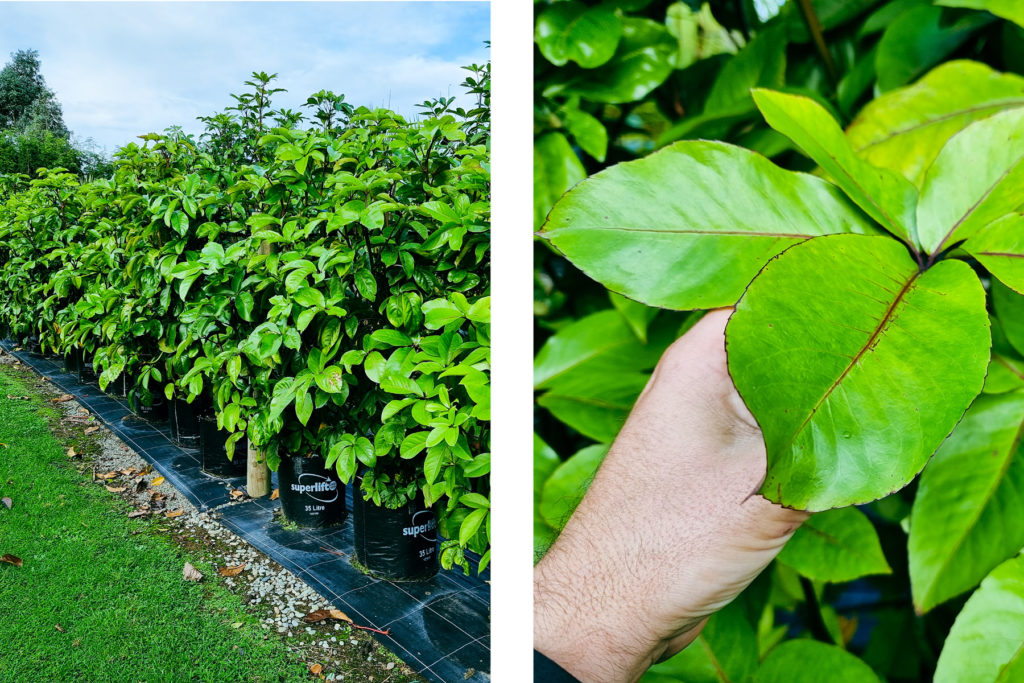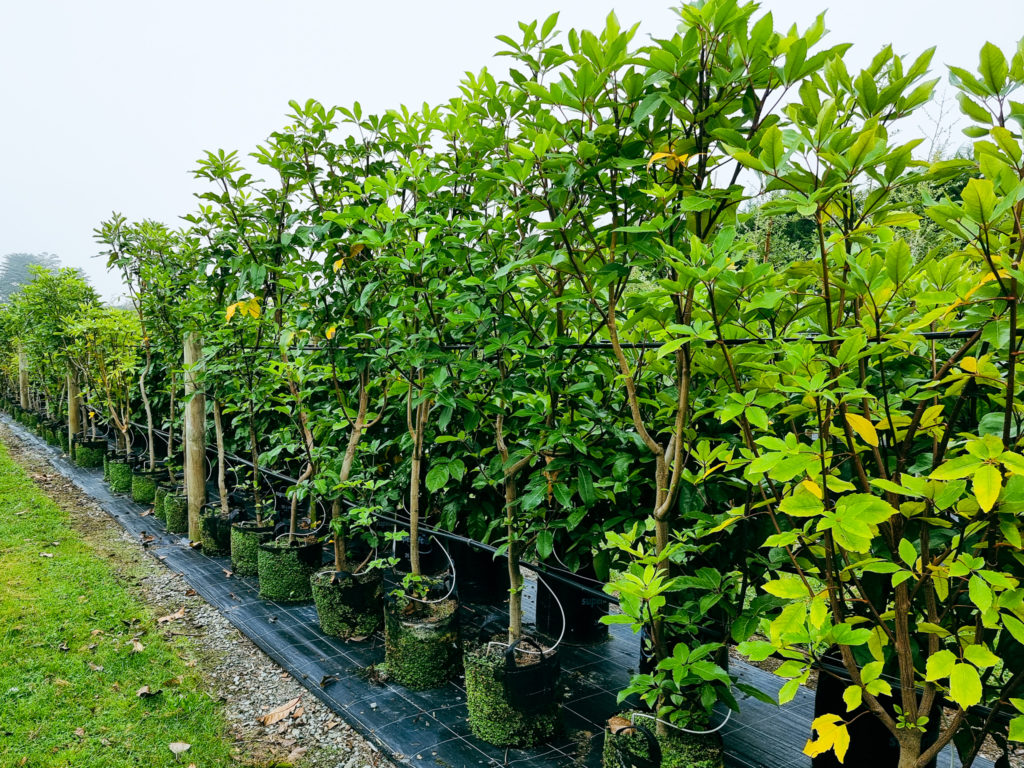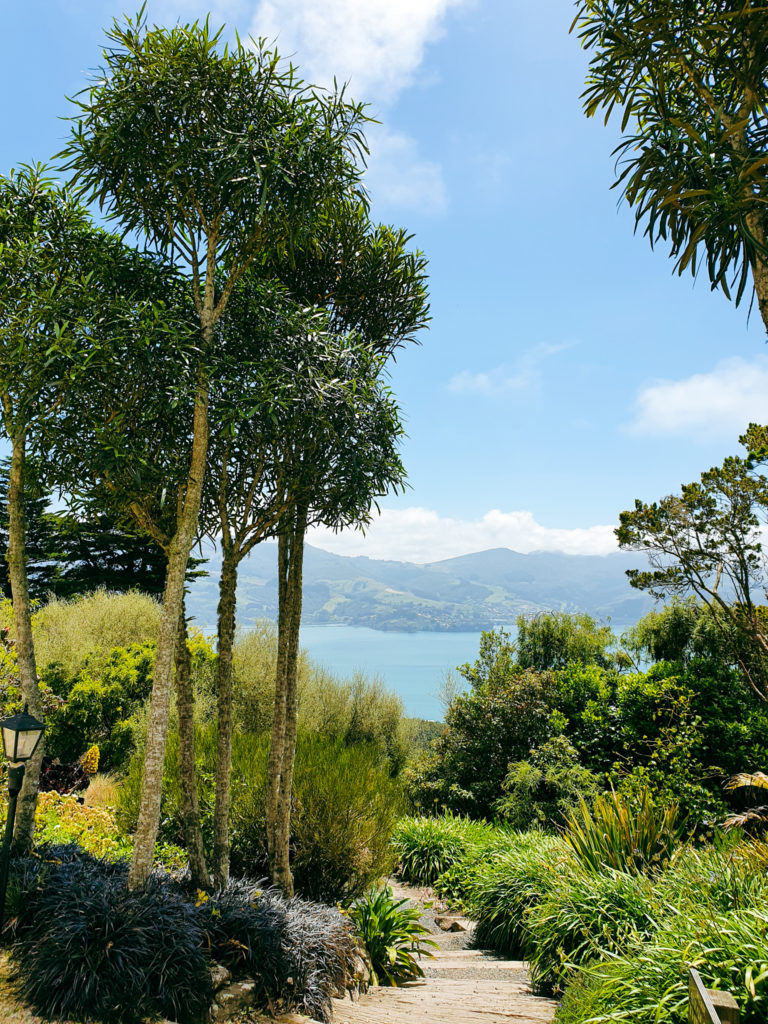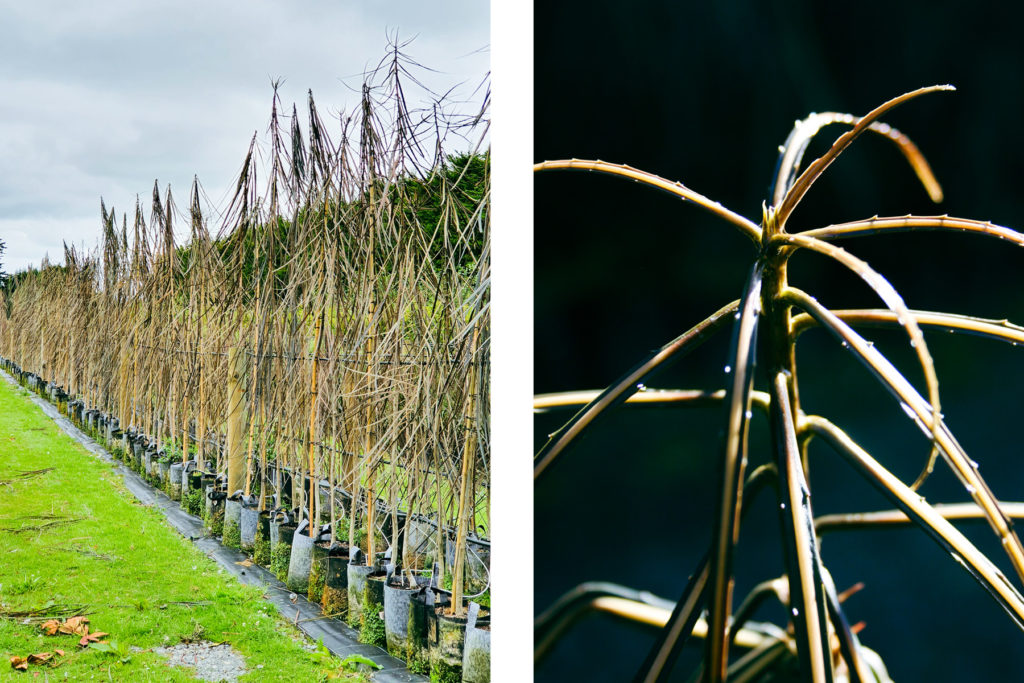PSEUDOPANAX – NZ Native Puahou – Five-Finger & Horoeka – Lancewood

Fast growing and relatively common, the five finger varieties of PSEUDOPANAX – Puahou, are the types of plants you see and appreciate regularly, possibly without ever knowing exactly what they are. Theirs is a show that can be seen in the wild and then moved to your own setting. Doing so is rewarded with lushness and a visual energy which is hard to resist. The word PSEUDOPANAX interestingly is Latin for “false ginseng“
PSEUDOPANAX laetus - Five-Finger - Puahou

There’s a distinctly topical feel to this lush NZ native. It’s possible from the large, deep green foliage. With its leathery like appearance it has a gloss, which reflects the light and adds a healthy dose of visual vitality. Come mid-summer, small white flowers emerge, eventually turning into purple berries which tend to provide irresistibility to birds. Hardy to coastal conditions, this native evergreen will grow inland in Southern NZ, or in warmer garden locations, growing to 3 – 4 metres.
PSEUDOPANAX laetus, 35lt container @ 1.5-1.6m+ (measured from top of bag) – approx 6 year old
also available in 14lt @ 1.2m+
PSEUDOPANAX arboreus - Five-Finger - Puahau

More frost hardy than its cousin – the Pseudopanax laetus, but with the same deep and entrancing dark green foliage, this native thrives in semi-mountainous areas and pretty much everywhere from the coast to alpine lakes. You can expect the same white flowers and purple berries but it’s that showy glossy foliage which really demands attention when used in screening. Expect it to grow up to 3 – 4m.
PSEUDOPANAX arboreus, 30lt container @ 1.6-1.8m+ (measured from top of bag) – approx 6 year old
also available in 12lt @ 1.2m
PSEUDOPANAX - Native Lancewood

The most curious looking native trees, and ones which represent the differences between youth and maturity so very well. Juvenile lancewoods have downward pointing leaves. Then as a mature tree they are upright, with attentive looking leaves which no longer slouch. This weird transformation is known as heteroblasty. And it’s quite something, in fact, young trees are so different from adults that early botanists believed they were different species.
PSEUDOPANAX crassifolium grouping at Larnachs Castle – Dunedin
PSEUDOPANAX crassifolium - Lancewood - Horoeka

A most striking plant, famed for its long and slender leaves. A dark purple, they often appear black. Their unique downward direction is coupled with a jagged edge to protect the plant from predators. A job the juvenile tree does well for several years before transforming into its mature, mop-top like appearance. Its distinctive architectural appearance is well suited to contemporary gardens and those wanting to add texture. Hardy and evergreen, expect it to reach heights up to 4 metres.
PSEUDOPANAX crassifolium, 22lt container @ 2-2.5m+ (measured from top of bag) – approx 7-8 year old)
also available in 8lt @ 1.5-1.8m, – approx 5 year old
PSEUDOPANAX ferox - Sabre-toothed Lancewood - Horoeka

The PSEUDOPANAX ferox – Sabre-toothed Lancewood is a slightly smaller compact cousin of the PSEUDOPANAX crassifolium. Unique ‘sabre tooth’ foliage adding interest and texture to your Native collection. Those saw-toothed edge leaves really make for a most unusual sight. They add colour and texture, working especially well in native and group plantings or to make an architectural statement. As you might guess from its looks, this Lancewood is hardy and can tolerate exposed conditions. This evergreen will grow to 3m
PSEUDOPANAX ferox, 22lt container @ 1.8m+ (measured from top of bag) – approx 7-8 year old
also available in 8lt @ 1-1.3m, – approx 5 year old
Archives
- July 2024
- June 2024
- May 2024
- April 2024
- March 2024
- February 2024
- January 2024
- December 2023
- November 2023
- October 2023
- September 2023
- August 2023
- July 2023
- June 2023
- May 2023
- April 2023
- March 2023
- February 2023
- January 2023
- December 2022
- November 2022
- October 2022
- September 2022
- August 2022
- July 2022
- June 2022
- May 2022
- April 2022
- March 2022
- February 2022
- January 2022
- December 2021
- November 2021
- October 2021
- September 2021
- August 2021
- July 2021
- April 2021
- March 2021
- February 2021
- January 2021



